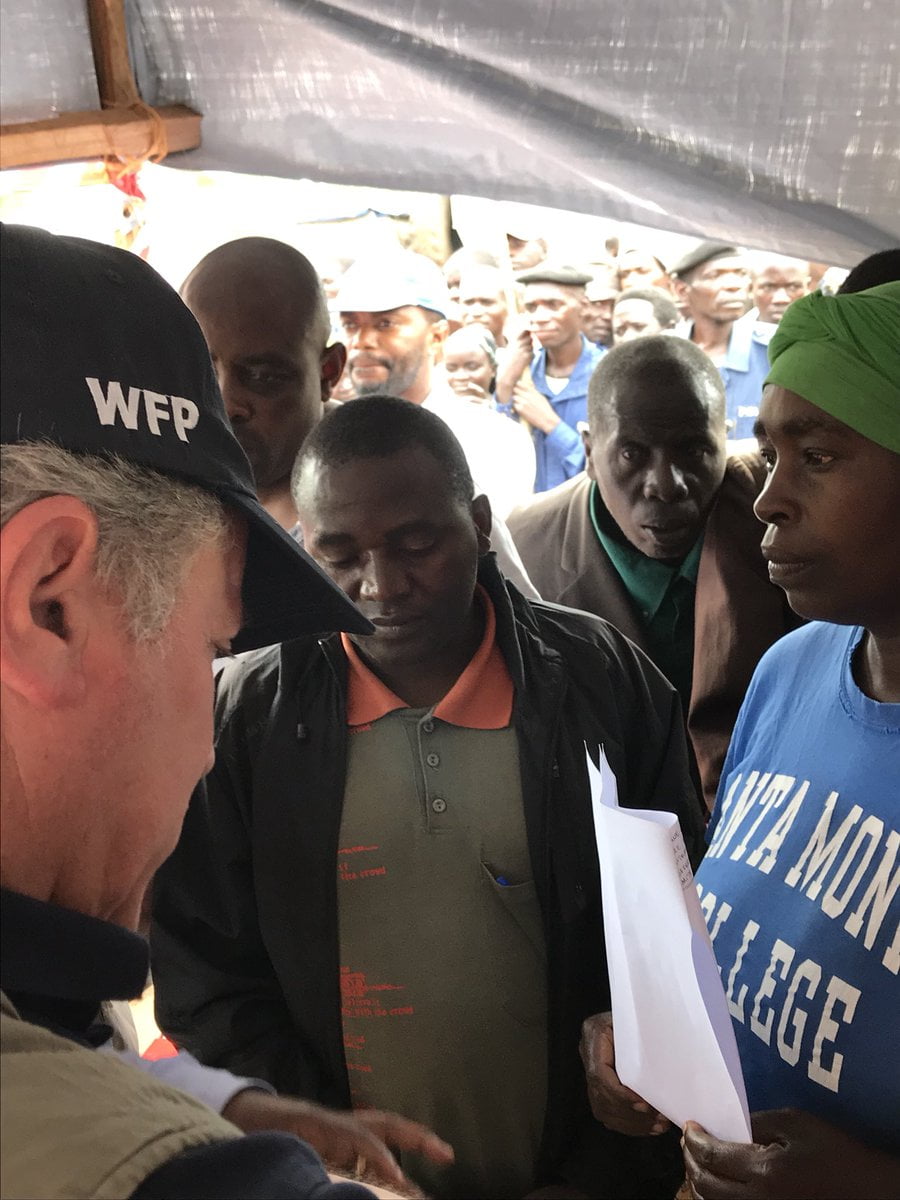The head of the World Food Program issued a dire warning on Monday: if donors do not step up, hundreds of thousands of people in the Kasai region of the Democratic Republic of the Congo will fave starvation.
“Right now, we are in crisis-emergency mode,” said David Beasely, who spoke with reporters on a conference call from the DRC. “If we don’t give the attention needed now, it could impact the entire region of Africa.”
Kasai is one of the newest crisis spots in Africa. For the past several months, an insurgency pitting local groups against the central government has steadily escalated. Over 1 million people have fled their homes, making it the fastest emerging internal displacement crisis in the world. Now, many of the people who live in this region — which was already extremely poor and vulnerable to shocks — are facing a major food crisis. Many of the people who have fled the fighting are now on the brink of starvation. According to Beasely, 3.2 million people in the the region are severely food in secure, with hundreds of thousands of people very close to famine conditions. “If we don’t receive the funds we need — immediately — [600,00] will be on the brink of starvation,” said Beasely.
This latest food crisis is emerging at exactly the wrong time.
There are some 19 protracted emergencies around the world that all demand donor attention. In four of these crises — South Sudan, Yemen, Somalia and Northern Nigeria — the UN has warned that millions of people face near famine conditions. Humanitarian NGOs and UN agencies are stretched farther than than ever, and by and large have been unable to meet the enormity of this challenge. Part of the problem is that funding for humanitarian relief is not keeping up with the scale of the needs. Of about 40 humanitarian appeals issued under UN auspices — ranging from emergency hurricane relief in the Caribbean to the Rohingya crisis to Syria refugees — donors have only provided about 50 percent of the needed funding, which amounts to about $11.5 billion out of a $23.6 billion in appeals.
In some cases, as is the situation for Kasai, only a tiny fraction of the appeal is funded. The World Food Program needs $135 million over the next eight months to stave off mass starvation. They have so far only received 1% of those funds from donors. “We are seeing donor fatigue and a severe competition on limited dollars,” said Beasely.
WFP issued a $25 million loan to itself to scale up operations through December, in an attempt to reach 500,000 people with food aid. But for that kind of response to be sustained, the international community needs to step in and provide funding for humanitarian agencies like WFP.
The problem is that donor dollars often go to places and conflicts that are of political or economic importance to donor countries. The conflict in Kasai is far off the radar of most donor countries–and far from a place that has attracted much media attention. To make matters worse, the government of the DRC had imposed onerous fees and logistical hurdles that have slowed the response. Insecurity in the region is also a major barrier to effective relief. WFP has had to pull staff out of security concerns. All the while the conflict had metastasized, displacing people internally and sending refugees across borders.
Still, no aid operations can be sustained with donor support — and this conflict cannot come to a halt without greater international pressure. So far, neither been forthcoming. “We cannot penalize the innocent victims of these conflicts,” said Beasely — and if we don’t address Kasai quickly, it will become a longterm and protracted conflict.”
To learn more about the crisis in Kasai, listen to my podcast interview with Ida Sawyer of Human Rights Watch, who explains how the conflict erupted and how it can be ended.
